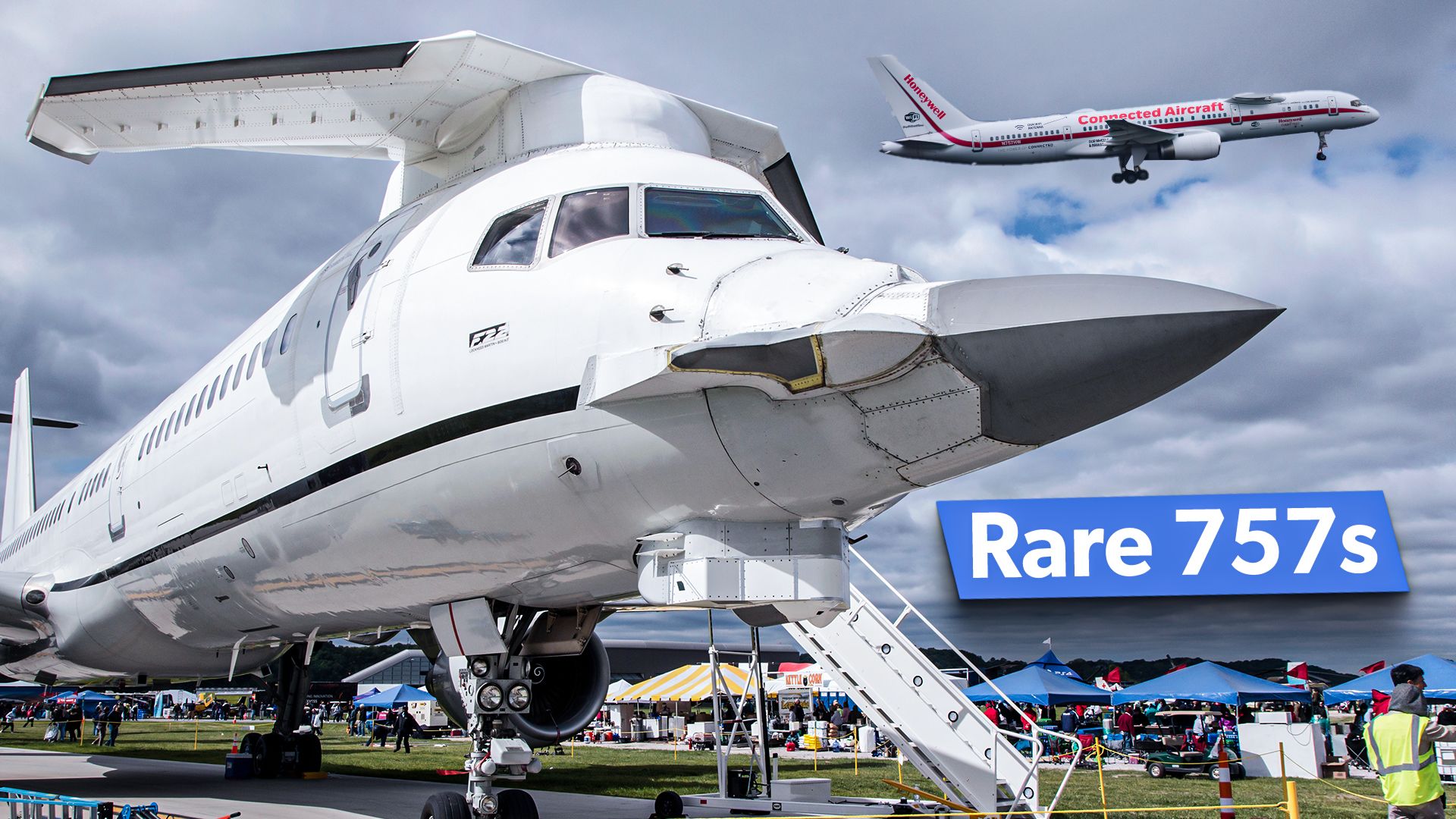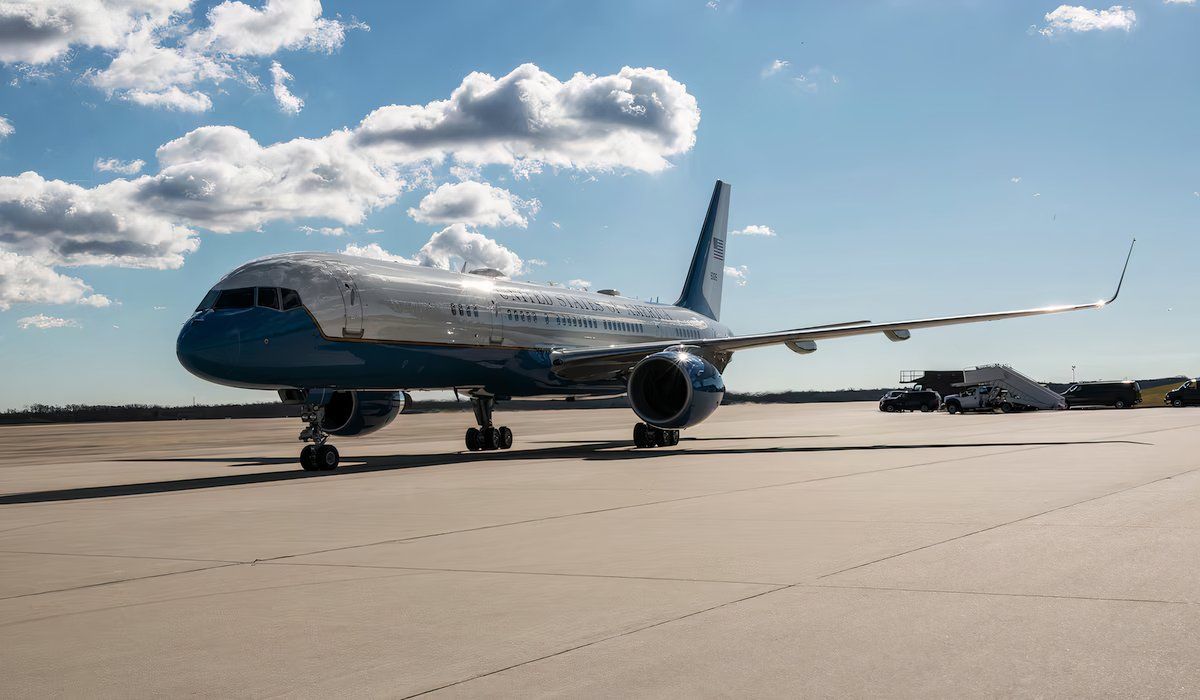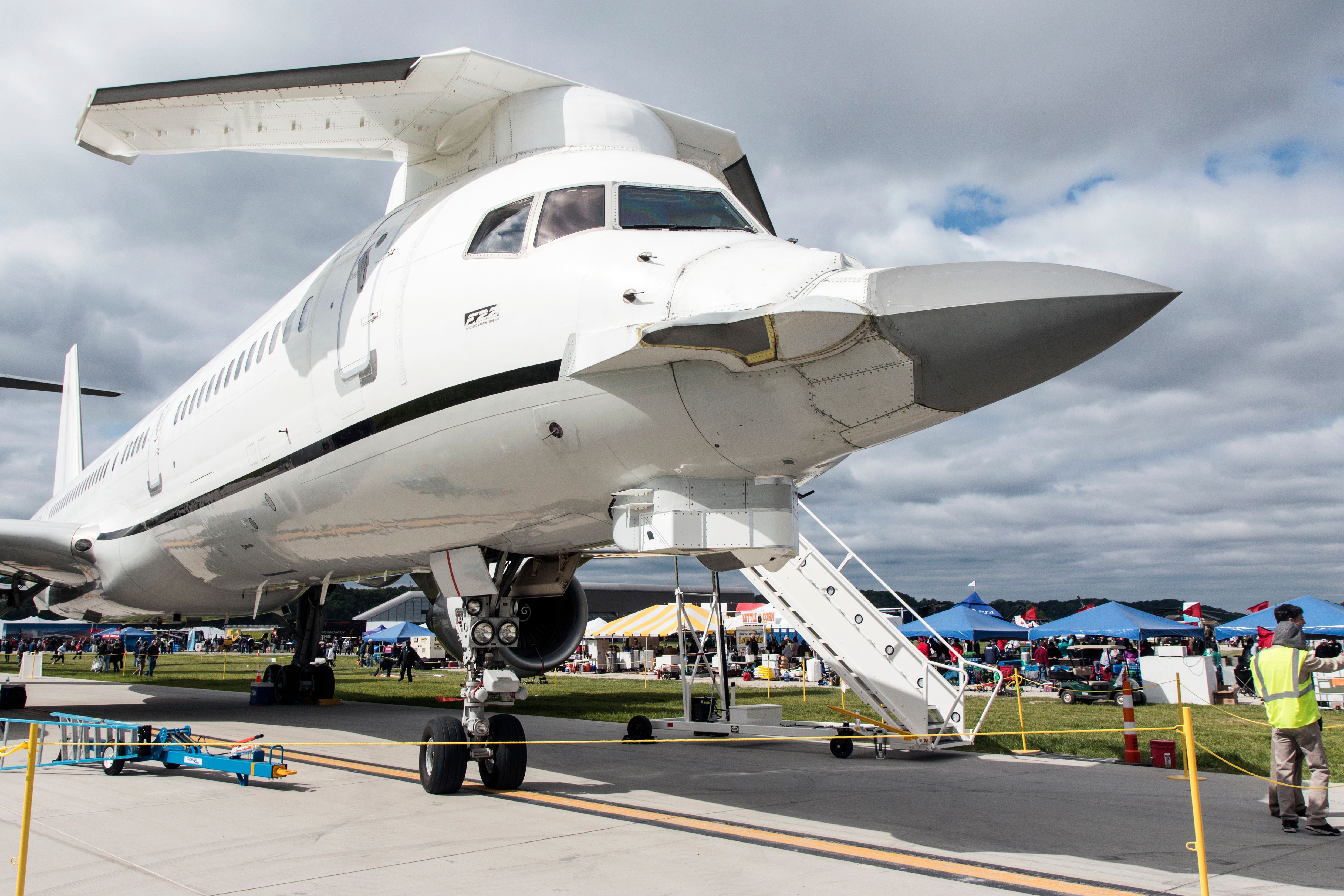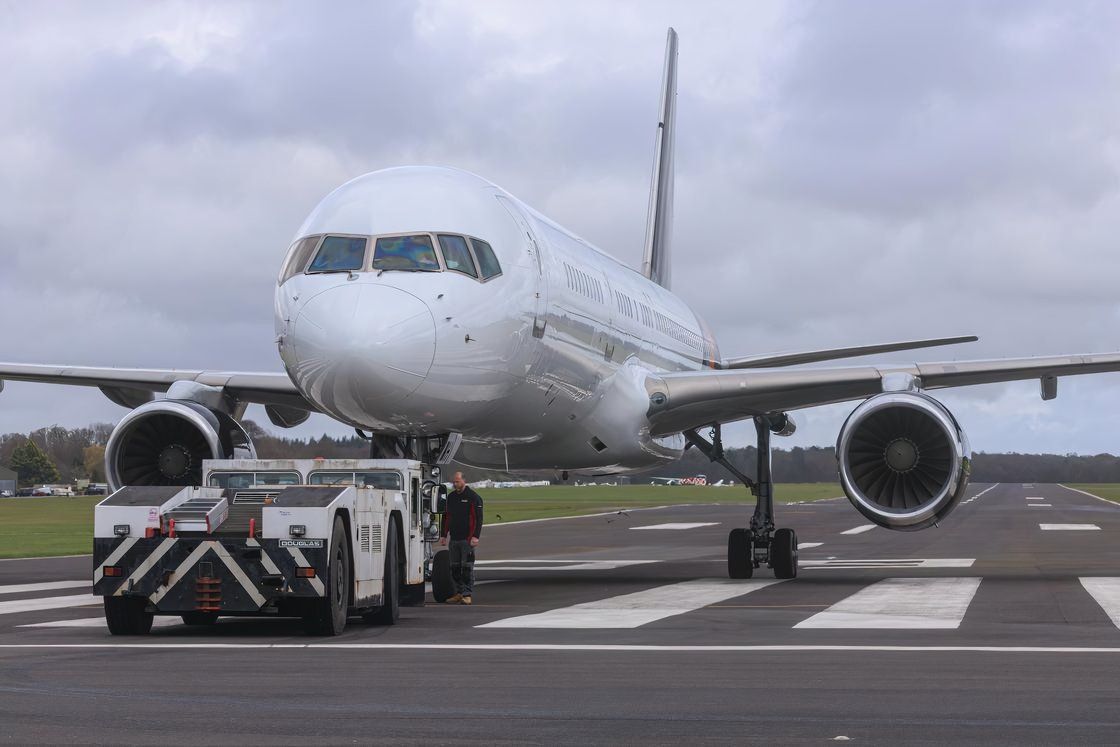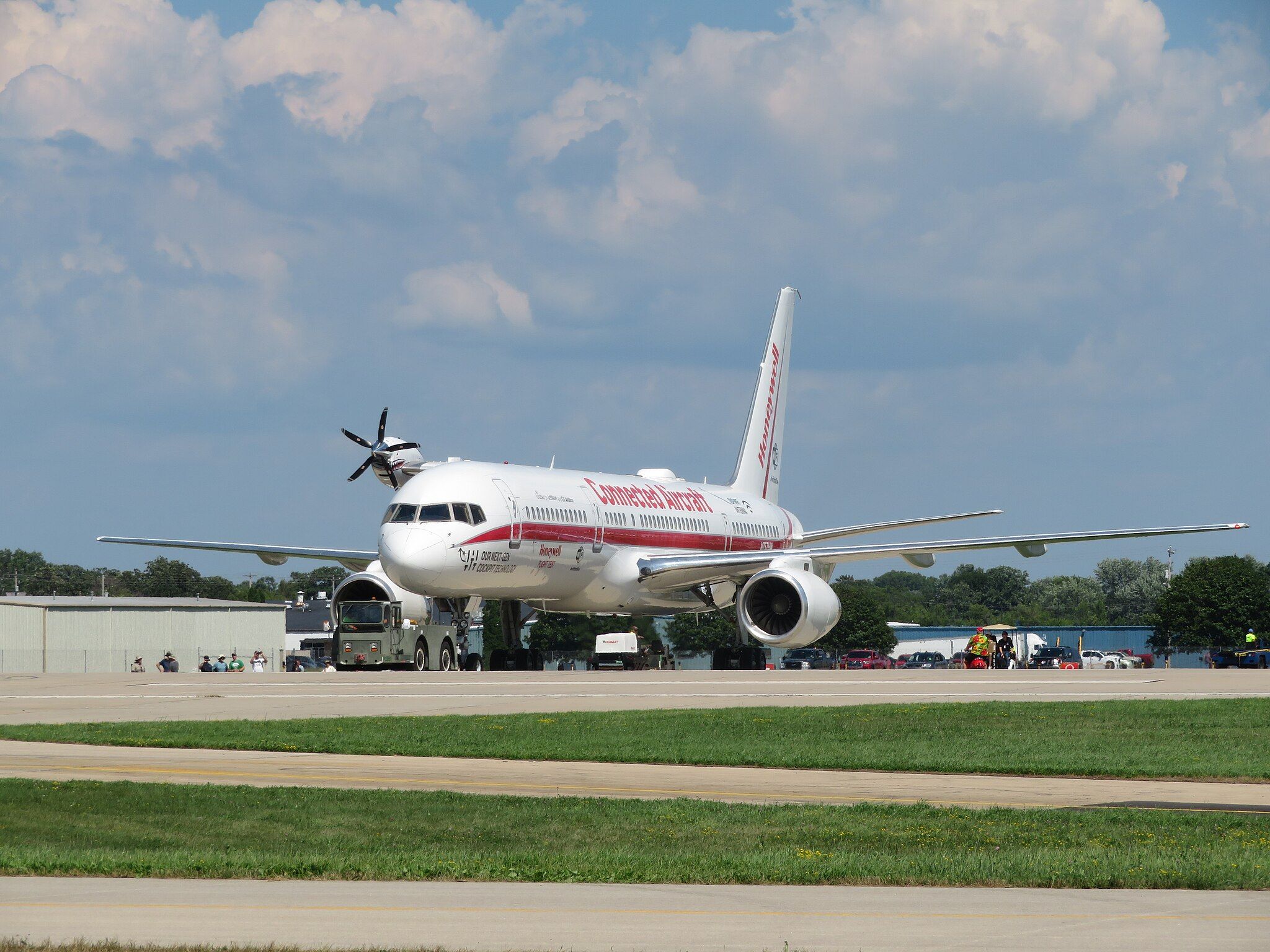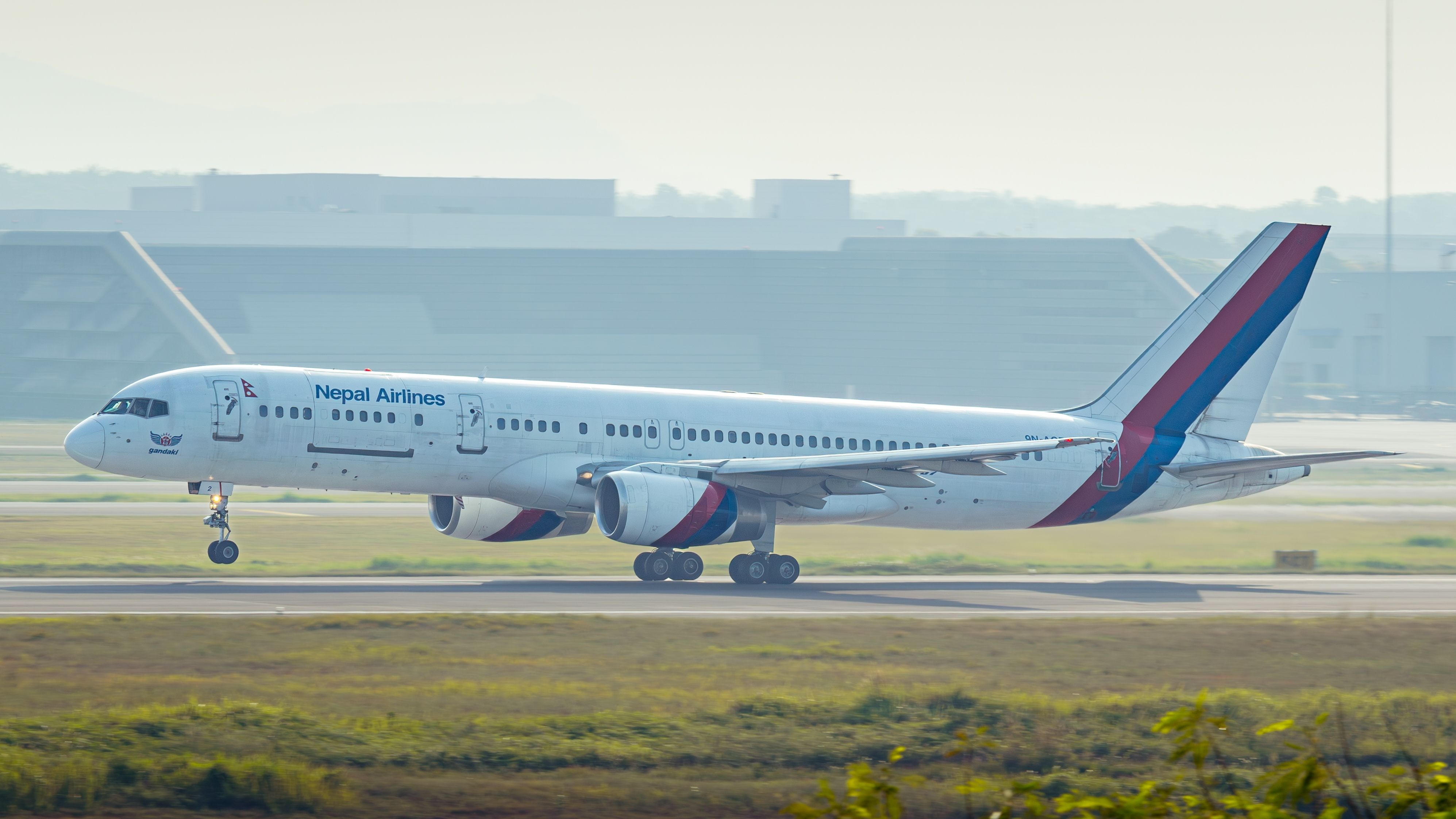Summary
- The Boeing 757 family includes the C-32 and C-32B Gatekeeper military variants with VVIP transport capabilities.
- The Boeing 757 testbed N757A was used in developing the F-22 Raptor’s avionics.
- Leonardo’s 757 is being converted into a flying lab for the UK’s Global Combat Air Programme with advanced sensors and systems.
It has been a little more than four decades since the Boeing 757 took to the skies for the first time. Introduced in 1983, the narrowbody workhorse has been a popular choice for airlines around the world. Even as newer Boeing 757s approach the 25-year mark, 495 of them are still actively flying with more than 40 different operators, as per the latest data from ch-aviation.
The Boeing 757 aircraft family includes two main variants: the 757-200 and the stretched 757-300. However, throughout its operational years, several Boeing 757s have been retrofitted as testbeds for various specialized uses. This article examines five rare Boeing 757 variants and testbeds.
1
Boeing C-32
Military variant of the Boeing 757
The Boeing 757 is used for military and governmental purposes, with the United States Air Force (USAF) designating its military variants as the Boeing C-32. The C-32 is a specially configured version of the Boeing 757-200 commercial jet.
Photo: US Air Force
The C-32 features the same airframe as the Boeing 757-200 but is equipped with upgraded interior fittings and modern avionics, according to the US Air Force. Additionally, the aircraft boasts better range capabilities than its predecessor, the C-137 Stratoliner.
|
Specification |
Boeing C-32 |
|---|---|
|
Maximum range |
5,500 nautical miles (unrefueled range) |
|
Load |
45 passengers |
|
Crew |
16 (depending on the mission) |
|
Weight |
92,000 pounds (41,731 kg) |
|
Cruise speed |
537 mph |
|
Ceiling |
42,000 feet (12,727 meters) |
Notably, Boeing C-32s sport a distinctive white and blue livery and are easily recognizable as VVIP (Very, Very Important Person) transport aircraft. The Air Force has two types of 757s in service — the C-32A, used as Air Force Two, and the secretive C-32B Gatekeeper.
The contract for the C-32 was awarded in August 1996. By utilizing commercial off-the-shelf acquisition methods, a new record was set: the aircraft was delivered in under two years. This marked the first time a military aircraft was procured through this process. The 89th Airlift Wing received the first of four C-32s in June 1998.
2
N757A
A Boeing 757 testbed assists in the development of military aircraft and other technologies
The 42.6-year-old Boeing 757, registered as N757A, was never delivered as a commercial jet and was instead used as a prototype for various developments, not only within the 757 family but also for military aircraft.
Photo: BlueBarronPhoto | Shutterstock
N757A, the first ever 757, has been used for a wide range of testing purposes over the past several years. The aircraft played a role in developing the F-22 Raptor, having its avionics installed before the first Raptor even flew. These test avionics were operated from within the cabin, which features a mock-up of the F-22 cockpit.
The heavily modified aircraft also features several external changes. Plane spotters can easily identify it by the distinctive wing mounted on top of the forward cabin.
3
Leonardo’s Boeing 757
The 757 has been fully overhauled and converted into a flying laboratory
Leonardo owns two 757 airframes, one of which it acquired last year for its Excalibur Flight Test Aircraft (FTA) project. The 757 is been completely overhauled and turned into a flying laboratory for combat air technology. This initiative aims to support the development of the future Test fighter jet, which the United Kingdom is developing in collaboration with Italy and Japan for the Global Combat Air Programme (GCAP).
Photo: Leonardo
It is worth noting that this Boeing 757 was bought from charter flight company Titan Airways. The aircraft will feature integrated sensors, non-kinetic effects (ISANKE), and communications systems (ICS) being developed by Leonardo and its international partners for GCAP.
It is anticipated that within the next two years, the aircraft will fly with this new technology, allowing onboard scientists and engineers to test the sensors and communications systems during flight.
4
Honeywell’s Boeing 757 testbed
This 757 accumulated over 3,000 flight test hours
Honeywell owns a legendary 42-year-old Boeing 757-200 (registration N757HW), which has served as a testbed for numerous technological advancements in the aviation industry since the company acquired it in 2005.
Honeywell’s Boeing 757, which was the fifth ever produced 757, is equipped to test anything from turbine engines and mechanical systems to advanced avionics software and high-speed connectivity equipment. In its latest public event, Honeywell’s 757 spotlighted:
- Honeywell’s Ka-Band SATCOM optimized for military missions
- HSD 400 – Inmarsat SBB L-Band cockpit and cabin SATCOM (GEO network) with SPSC modem for L-Max capability
- Aspire 400 – Inmarsat SBB L-Band cockpit and cabin SATCOM (GEO network)
- Go Direct Router – holds Honeywell’s Enterprise Management & Console Software
Indeed, the Boeing 757 has been extensively traveled, visiting over 30 countries on five continents. It has performed more than 800 flight demonstrations and accumulated over 3,000 flight test hours worldwide.
5
The Boeing 757-200M
Nepal Airlines flew the only example
In Boeing’s commercial aircraft lineup, the letter ‘M’ signifies that the 757-200M was a ‘Combi’ model, featuring a main deck that was divided between passengers and cargo. Unlike most other Boeing 757s, which are configured for either passengers or cargo, the 757-200M accommodated both. It had a side cargo door located toward the front on the left side.
Photo: Jeang Herng | Shutterstock
Throughout its flying career, the one and only 757-200M was part of Nepal Airlines’ fleet. The aircraft is currently 36 years old and still belongs to the Nepalese airline.

